That's just Serene.
You haven't lived. . .
. . .until you've watched Firefly on a screen--[holds out hands as wide apart as they can go]--this big.
I love my life.
 Currently Listening: Dexter Freebish - Leaving Town
Currently Listening: Dexter Freebish - Leaving Town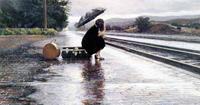 Currently listening: Carbon Leaf - On Any Given Day.
Currently listening: Carbon Leaf - On Any Given Day. Currently listening: Stan Rogers - First Christmas, and The Idiot
Currently listening: Stan Rogers - First Christmas, and The Idiot
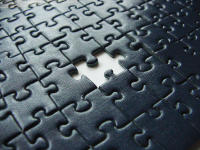 Currently Listening: Switchfoot - Playing for Keeps.
Currently Listening: Switchfoot - Playing for Keeps. I know I said I was going to post this yesterday, in keeping with my big-ol'-hunk-o'-content, but I got distracted by something very shiny and spent the day doing other things.
I know I said I was going to post this yesterday, in keeping with my big-ol'-hunk-o'-content, but I got distracted by something very shiny and spent the day doing other things. I do have one major complaint with Flickr, however. It seems that any artist with a large enough body of work (especially those who take erotic or revealing photographs) will attract a legion of flickr surfers and fans. The comment system (being painless and extremely easy to use) then begins to come into play.
I do have one major complaint with Flickr, however. It seems that any artist with a large enough body of work (especially those who take erotic or revealing photographs) will attract a legion of flickr surfers and fans. The comment system (being painless and extremely easy to use) then begins to come into play. When I post an image like the one to the right, sure, I'd love to hear the occasional "pretty!" or "neat idea" but far more appreciated would be "the lighting is too bright, did you try it with a softer source?" or "the angle seems kindof funny. Maybe from closer to floor level?" Those comments, from other photographers, would aid my development as an artist and give me a step-up in improving my work.
When I post an image like the one to the right, sure, I'd love to hear the occasional "pretty!" or "neat idea" but far more appreciated would be "the lighting is too bright, did you try it with a softer source?" or "the angle seems kindof funny. Maybe from closer to floor level?" Those comments, from other photographers, would aid my development as an artist and give me a step-up in improving my work. My models don't need their self-esteem stroked. When they chose to climb in front of the camera they were already proving their own self-confidence was strong (I once told one of my models that a previous shoot she'd done was amazing because the photographer had managed to capture every bad angle her face had, and none of the myriad of good ones). Everyone is not a beautiful and unique flower, and not every picture of a woman (even of a beautiful woman) is a beautiful image.
My models don't need their self-esteem stroked. When they chose to climb in front of the camera they were already proving their own self-confidence was strong (I once told one of my models that a previous shoot she'd done was amazing because the photographer had managed to capture every bad angle her face had, and none of the myriad of good ones). Everyone is not a beautiful and unique flower, and not every picture of a woman (even of a beautiful woman) is a beautiful image.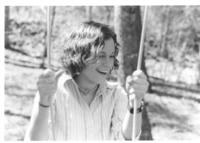
 I talked yesterday about why I take pictures and what I'm searching for when I photograph people.
I talked yesterday about why I take pictures and what I'm searching for when I photograph people. Now, as a person trying to collect photographs that enhance my understanding of how to capture raw images of beauty as a result of the camera-work and the body in question, and not the result of some fellow in a dimly lit room with a copy of photoshop and too much time on his hands, I've got a bit of a challenge ahead of me. My solution has been to turn to flickr.
Now, as a person trying to collect photographs that enhance my understanding of how to capture raw images of beauty as a result of the camera-work and the body in question, and not the result of some fellow in a dimly lit room with a copy of photoshop and too much time on his hands, I've got a bit of a challenge ahead of me. My solution has been to turn to flickr. Flickr is an online photograph hosting service/community. The upshot: you get to post public and private pictures at your leisure, and share them with people. Want to show granny all the pictures from cousin bob's wedding without e-mailing her 30 jpegs? Send her a link to the wedding set. The system isn't perfect (you have to hope granny doesn't find the 'swingers in action' set in one of your contact's collections and think it is yours). But it does allow for a whole lot of pictures to be shared by a whole lot of people.
Flickr is an online photograph hosting service/community. The upshot: you get to post public and private pictures at your leisure, and share them with people. Want to show granny all the pictures from cousin bob's wedding without e-mailing her 30 jpegs? Send her a link to the wedding set. The system isn't perfect (you have to hope granny doesn't find the 'swingers in action' set in one of your contact's collections and think it is yours). But it does allow for a whole lot of pictures to be shared by a whole lot of people. Over my time searching for images of the female form that are based in reality and skilled photography, I've come to rely almost exclusively on the (often) amateur collections available on flickr. These collections range from professionals who take personal photographs on the side, to the-girl-next-door that just happens to love her digital camera.
Over my time searching for images of the female form that are based in reality and skilled photography, I've come to rely almost exclusively on the (often) amateur collections available on flickr. These collections range from professionals who take personal photographs on the side, to the-girl-next-door that just happens to love her digital camera.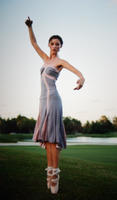 The photographs on flickr are not always raw. Some of them are post-processed, some even heavily, but rarely are these effects applied with professional goals in mind. Mass-marketability is not the driving force behind the modifications. This means that most of the after-work, often done by the same photographer who took the picture, is merely an attempt on the artists part to make the image more closely resemble their own memory of the moment at which the image capture occurred. Sometimes they may edit to bring out some certain emotion or reaction to the image, but rarely will they reshape a model to fit more closely into society's 'sexy' mold.
The photographs on flickr are not always raw. Some of them are post-processed, some even heavily, but rarely are these effects applied with professional goals in mind. Mass-marketability is not the driving force behind the modifications. This means that most of the after-work, often done by the same photographer who took the picture, is merely an attempt on the artists part to make the image more closely resemble their own memory of the moment at which the image capture occurred. Sometimes they may edit to bring out some certain emotion or reaction to the image, but rarely will they reshape a model to fit more closely into society's 'sexy' mold. Flickr, like any other public community, has bad apples. There are plenty of flickrites who merely repost other work, including much professional stuff from photoshoots for magazines or pornographic movie covers. This work is just as heavily mangled as any of the work you'd see in this month's issue of Maxim, but it is a simple matter to avoid such users and plumb the depths of the amateurs and professionals who are motivated by drives similar to my own.
Flickr, like any other public community, has bad apples. There are plenty of flickrites who merely repost other work, including much professional stuff from photoshoots for magazines or pornographic movie covers. This work is just as heavily mangled as any of the work you'd see in this month's issue of Maxim, but it is a simple matter to avoid such users and plumb the depths of the amateurs and professionals who are motivated by drives similar to my own.
 So this public photograph sharing service has become my goldmine for images that give me inspiration and ideas about the kind of photography I want to be able to generate on my own over the coming years. Which is where I'll leave off for today. Part III comes tomorrow, where I'll rant about my biggest problem with Flickr, and how I hope it improves in the future.
So this public photograph sharing service has become my goldmine for images that give me inspiration and ideas about the kind of photography I want to be able to generate on my own over the coming years. Which is where I'll leave off for today. Part III comes tomorrow, where I'll rant about my biggest problem with Flickr, and how I hope it improves in the future.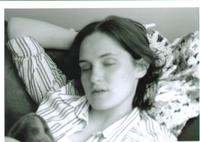 I also became aware of what aspects of my photography I want to focus on and improve (posed shots with willing models, architecture, machines), and what I'm willing to let fall by the wayside (I suck at candids, and so I've pretty much left off trying).
I also became aware of what aspects of my photography I want to focus on and improve (posed shots with willing models, architecture, machines), and what I'm willing to let fall by the wayside (I suck at candids, and so I've pretty much left off trying).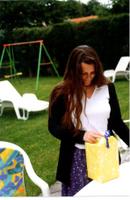 As I realized that my photography of the body was lacking in part due to ignorance, I decided that one method of discovery was to search out photographs of the body that played on the strengths of angles, poses and lighting to create better photographs. Thus, a half a year ago I began assembling a collection of photographs of the human body, male and female. The collection currently stands at 1,430 images, with the vast majority (1,191) being of women, because I am far more interested in perfecting my ability to capture the female form to film than the male one.
As I realized that my photography of the body was lacking in part due to ignorance, I decided that one method of discovery was to search out photographs of the body that played on the strengths of angles, poses and lighting to create better photographs. Thus, a half a year ago I began assembling a collection of photographs of the human body, male and female. The collection currently stands at 1,430 images, with the vast majority (1,191) being of women, because I am far more interested in perfecting my ability to capture the female form to film than the male one.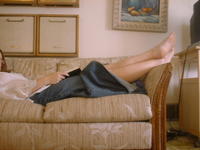 And since I have no interest in becoming adept at taking pictures of plastic people or airbrushing extensively to improve my photographs, I do not seek primarily the 'hot chicks!" that seem to inhabit at least one thread in every forum in which there are males present. These images are off my radar for two reasons. The first is that I have no desire to build the skillset needed (such as the post-processing to dull the humanity of the image), and the second is that the combination of fake breasts, ridiculous settings, and often exploitative posing creates content in which I have no interest.
And since I have no interest in becoming adept at taking pictures of plastic people or airbrushing extensively to improve my photographs, I do not seek primarily the 'hot chicks!" that seem to inhabit at least one thread in every forum in which there are males present. These images are off my radar for two reasons. The first is that I have no desire to build the skillset needed (such as the post-processing to dull the humanity of the image), and the second is that the combination of fake breasts, ridiculous settings, and often exploitative posing creates content in which I have no interest. I take pictures because I feel that the female form is something like a genie in a bottle. Each girl is trapped inside herself, waiting for a way out. Looking for that one moment, that one perfect instant where everything comes together and people see them as they are, rather than as society expects them to be. Every woman has those moments. The band Counting Crows says it this way in A Long December.
I take pictures because I feel that the female form is something like a genie in a bottle. Each girl is trapped inside herself, waiting for a way out. Looking for that one moment, that one perfect instant where everything comes together and people see them as they are, rather than as society expects them to be. Every woman has those moments. The band Counting Crows says it this way in A Long December.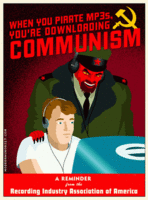 First: some news from the "consumers have rights?" campaign of the RIAA.
First: some news from the "consumers have rights?" campaign of the RIAA.